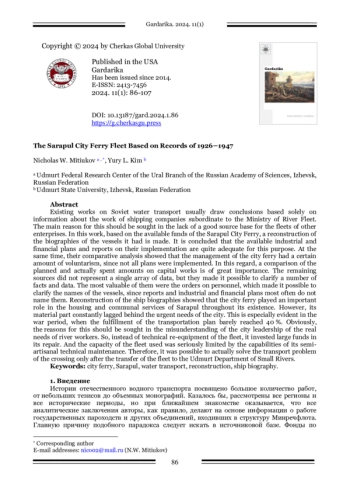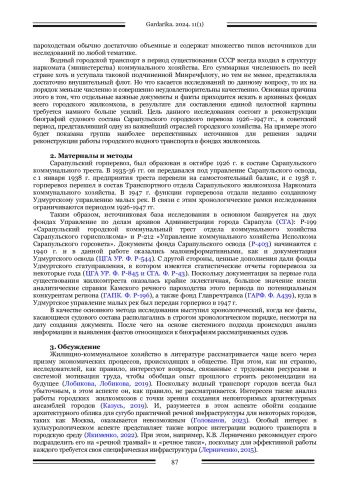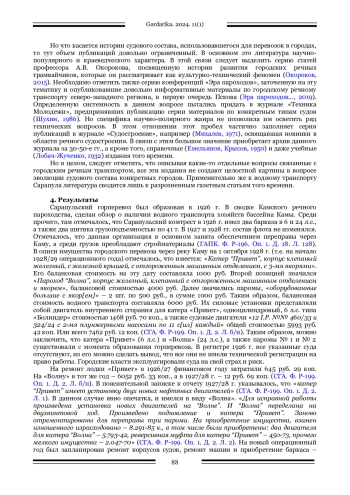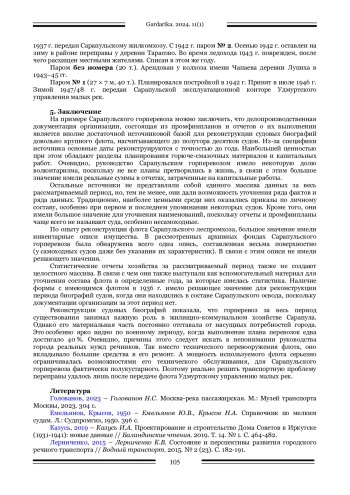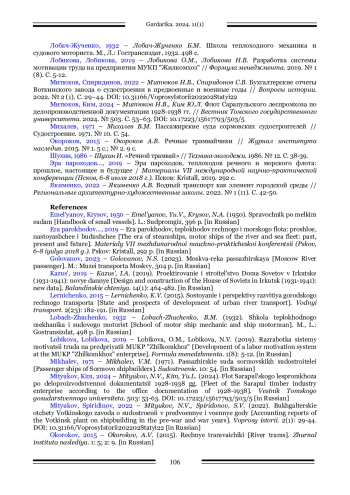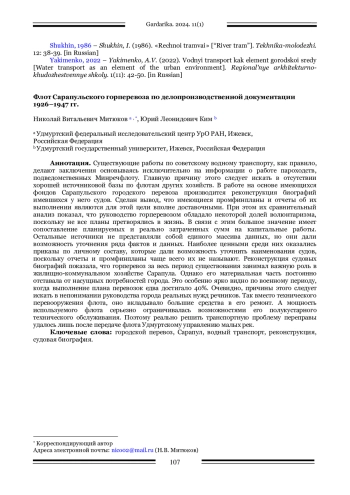Существующие работы по советскому водному транспорту, как правило, делают заключения основываясь исключительно на информации о работе пароходств, подведомственных Минречфлоту. Главную причину этого следует искать в отсутствии хорошей источниковой базы по флотам других хозяйств. В работе на основе имеющихся фондов Сарапульского городского перевоза производится реконструкция биографий имевшихся у него судов. Сделан вывод, что имеющиеся промфинпланы и отчеты об их выполнении являются для этой цели вполне доставочными. При этом их сравнительный анализ показал, что руководство горперевозом обладало некоторой долей волюнтаризма, поскольку не все планы претворялись в жизнь. В связи с этим большое значение имеет сопоставление планируемых и реально затраченных сумм на капитальные работы. Остальные источники не представляли собой единого массива данных, но они дали возможность уточнения ряда фактов и данных. Наиболее ценными среди них оказались приказы по личному составу, которые дали возможность уточнить наименования судов, поскольку отчеты и промфинпланы чаще всего их не называют. Реконструкция судовых биографий показала, что горперевоз за весь период существования занимал важную роль в жилищно-коммунальном хозяйстве Сарапула. Однако его материальная часть постоянно отставала от насущных потребностей города. Это особенно ярко видно по военному периоду, когда выполнение плана перевозок едва достигало 40%. Очевидно, причины этого следует искать в непонимании руководства города реальных нужд речников. Так вместо технического перевооружения флота, оно вкладывало большие средства в его ремонт. А мощность используемого флота серьезно ограничивалась возможностями его полукустарного технического обслуживания. Поэтому реально решить транспортную проблему переправы удалось лишь после передаче флота Удмуртскому управлению малых рек.
Existing works on Soviet water transport usually draw conclusions based solely on information about the work of shipping companies subordinate to the Ministry of River Fleet. The main reason for this should be sought in the lack of a good source base for the fleets of other enterprises. In this work, based on the available funds of the Sarapul City Ferry, a reconstruction of the biographies of the vessels it had is made. It is concluded that the available industrial and financial plans and reports on their implementation are quite adequate for this purpose. At the same time, their comparative analysis showed that the management of the city ferry had a certain amount of voluntarism, since not all plans were implemented. In this regard, a comparison of the planned and actually spent amounts on capital works is of great importance. The remaining sources did not represent a single array of data, but they made it possible to clarify a number of facts and data. The most valuable of them were the orders on personnel, which made it possible to clarify the names of the vessels, since reports and industrial and financial plans most often do not name them. Reconstruction of the ship biographies showed that the city ferry played an important role in the housing and communal services of Sarapul throughout its existence. However, its material part constantly lagged behind the urgent needs of the city. This is especially evident in the war period, when the fulfillment of the transportation plan barely reached 40 %. Obviously, the reasons for this should be sought in the misunderstanding of the city leadership of the real needs of river workers. So, instead of technical re-equipment of the fleet, it invested large funds in its repair. And the capacity of the fleet used was seriously limited by the capabilities of its semi-artisanal technical maintenance. Therefore, it was possible to actually solve the transport problem of the crossing only after the transfer of the fleet to the Udmurt Department of Small Rivers.
